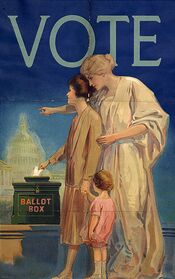It’s the 12 Days of Ballotpedia! Your gift powers the trusted, unbiased information voters need heading into 2026. Donate now!
Maryland 2016 ballot measures
Presidential • U.S. Senate • U.S. House • State judges • Local judges • State ballot measures • School boards • Municipal • Candidate ballot access |
| 2016 Maryland Ballot Measures | |
|---|---|
2018 »
« 2014
| |
| 2016 U.S. State Ballot Measures | |
|---|---|
2017 »
« 2015
| |
 | |
| Overview | |
| Election results | |
| Scorecard | |
| Tuesday Count | |
| Lawsuits | |
| Deadlines | |
| Voter guides | |
| Initiatives filed | |
| Year-end analysis | |
| Part 2: Campaigns | |
| Polls | |
| Media editorials | |
| Part 3: Finances | |
| Contributions | |
| Signature costs | |
| Ballot Measure Monthly | |
| Signature requirements | |
Have you subscribed yet?
Join the hundreds of thousands of readers trusting Ballotpedia to keep them up to date with the latest political news. Sign up for the Daily Brew.
| |
One statewide ballot measure was certified to appear on the Maryland ballot on November 8, 2016. The measure was approved.
Getting measures on the ballot
Maryland allows citizen initiatives in the form of veto referendums. Signature requirements for referendum petitions are determined by calculating three percent of the votes cast for governor in the most recent election. At least 51,996 valid signatures were required to put veto referendums before voters in 2016. The deadline to file the first third of petition signatures for non-emergency bills signed into law more than 45 days before the first day of June was June 1, 2016, while the remaining two-thirds of signatures had to be filed by June 30, 2016. The deadline to file the first third of petition signatures for bills signed into law less than 45 days before the first day of June was 30 days after the bill passed the legislature, while the remaining two-thirds of signatures had to be filed in the next 30 days.
The state legislative session ran from January 13 through April 11, 2016, during which time the Maryland Legislature could place legislatively referred constitutional amendments on the ballot. The legislature can put a proposed amendment on the ballot upon a sixty percent majority vote in both the legislative chambers. The amendment must then be approved by a majority of voters.
Historical facts
- From 1996 through 2014, 31 measures appeared on the ballot in Maryland.
- From 1996 through 2014, there was an average of about three measures on the ballot in even-numbered years.
- Over the two decades prior to 2016, 28 of 31 measures, or 90 percent, were approved, and three of 31 measures, or 10 percent, were defeated.
On the ballot
The 2016 regular session of the Maryland State Legislature ended on April 11, 2016. The legislature put one measure, a legislatively referred constitutional amendment, on the November 2016 election ballot. No veto referendums were circulated targeting the 2016 election.
| Type | Title | Subject | Description | Result |
|---|---|---|---|---|
| LRCA | Question 1 | Executives | How to fill vacancies for some statewide elected offices |
Not on the ballot
| Type | Title | Subject | Description | Result |
|---|---|---|---|---|
| LRCA | Judicial Retirement Age Amendment | Judiciary | Increases the required age of retirement for judges from 70 to 75 | |
| LRCA | Chesapeake and Atlantic Coastal Bays Fund Amendment | Gov't Finances | Creates a Chesapeake and Atlantic Coastal Bays 2010 Trust Fund | |
| LRCA | Criminal Procedure Amendment | Civil and criminal trials | Prevents state constitution from being interpreted to state that indigent defendants should be provided lawyers at their initial appearance before a district court commissioner |
External links
See also
- 2016 ballot measures
- List of Maryland ballot measures
- Laws governing ballot measures in Maryland
- Campaign finance requirements for Maryland ballot measures
 |
State of Maryland Annapolis (capital) |
|---|---|
| Elections |
What's on my ballot? | Elections in 2025 | How to vote | How to run for office | Ballot measures |
| Government |
Who represents me? | U.S. President | U.S. Congress | Federal courts | State executives | State legislature | State and local courts | Counties | Cities | School districts | Public policy |



